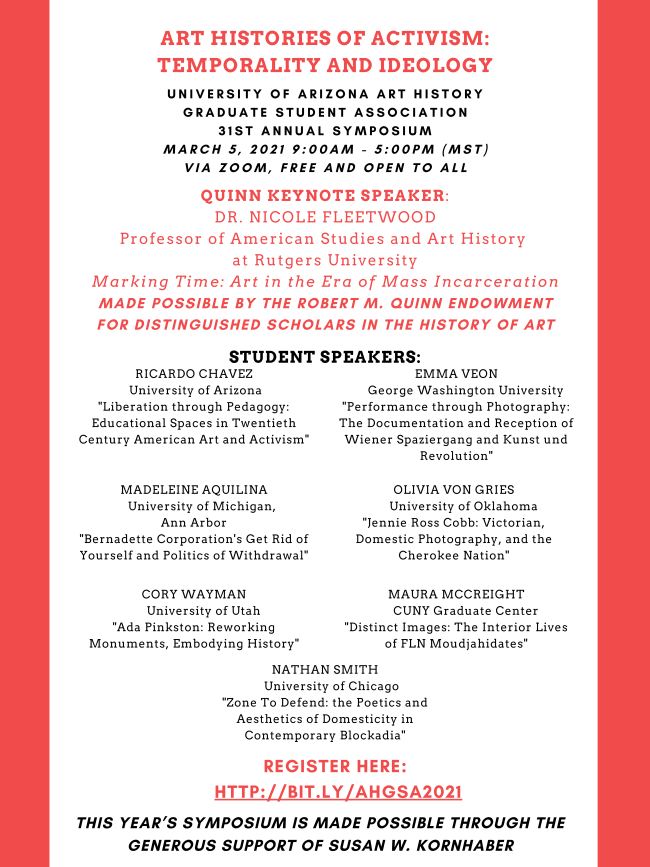
Art History MA student Cory Wayman is presenting a paper this week at the University of Arizona Art History Graduate Student Conference, and next month at the University of Oregon. Cory’s paper, “Ada Pinkston: Reworking Monuments, Embodying History”, addresses monuments, contemporary art, and social justice.
This paper analyzes the multimedia and community-engaging practices of contemporary artist and scholar Ada Pinkston, whose work deconstructs legacies of Confederate monuments and imagines new possibilities of public monuments with the goal of empowering historically disenfranchised communities. Through community workshops, public performances, and a future vision to democratize public memorials through crowdsourcing “objects of memory” utilizing 3D-printing and Augmented Reality (AR) technology, Pinkston’s ongoing multi-part project LandMarked (2018-) pursues urgent answers to questions about the past, present, and futures of public monuments. In December 2020, Pinkston was selected as one of five American contemporary artists to be part of LACMA’s “Monumental Perspectives,” an AR and mural art commission project in partnership with Snapchat which will install site-specific AR artworks beginning in 2021 that “will examine key moments and figures in the region’s past and present that have too-often been overlooked.” Pinkston’s LandMarked performances on vacated monumental pedestals formerly dedicated to Confederate and pro-slavery historical figures command new concepts of the workings of time in relation to living bodies in post-slavery America. Performance scholar Dr. Jill Lane’s concept of “hemispheric deep time” provides a theoretical framework for reading Pinkston’s performative interrogations of colonial legacies through the mediums of dance, performance, video and photography. This paper explores how Pinkston’s live works challenge normative modes of national memorial and historical displacements of oppressed voices by articulating traumatic experiences of oppressed peoples through affirmative performance gestures and methods of archival and photographic documentation. A secondary focus of this paper examines an earlier costumed performance, La Noire De (2012), in which Pinkston employs sound, image montage and biography to deconstruct the cultural treatments of nineteenth-century South African Khoikhoi woman Sarah Baartman— who became marketed as “the Hottentot Venus” within exploitive exhibition contexts by French and British colonizers and audiences—in relation to contemporary images of Black female sexuality in popular culture. Reading La Noire De in relation Pinkston’s current LandMarked performances illuminates how Ada’s Pinkston multimedia approaches to performance art and community activism enact transtemporal interrogations of white supremacist ideologies which perpetuate continued subjugation of Black bodies in the postcolonial present.
